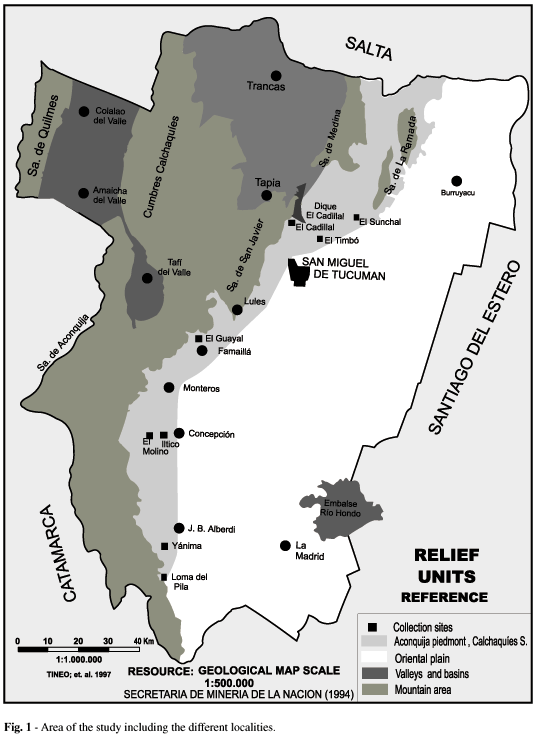American Tegumentary Leishmaniasis is endemic in the province of Tucumán since 1916 where the first Argentinian case of leishmaniasis was reported. An epidemic outbreak took place in the province during 1986-1988, after that the number of cases increased gradually again between 1991-1996. Since October of 1999 sand flies captures were performed at different places associated with current and past transmission or sites identified as risky ones. The collections were carried out with CDC mini light trap and modified Shannon trap. In this study 2338 Phlebotominae were captured being prevalent Lutzomyia neivai (Lu intermedia complex) (97.7%), followed by Lu. migonei. We report Lu. shannoni for the first time in the province. Phlebotominae was abundant in the warm and humid months and showed a peak before the summer rains. Lutzomyia neivai showed a pattern (peridomestic prevalence, anthropophilia, abundance in secondary forest) consistent with other outbreak studies. Thus, the results reinforce this species incrimination as vector of leishmaniasis in the area. Domestic animals close to houses increase its abundance, and so the probable associated risk of human-Phlebotominae contact. Further studies should be done to understand the role of each Phlebotominae species in the transmission of leishmaniasis in Tucumán in order to design entomological surveillance strategies.
Phlebotominae; Lutzomyia neivai; Tucumán; Argentina




